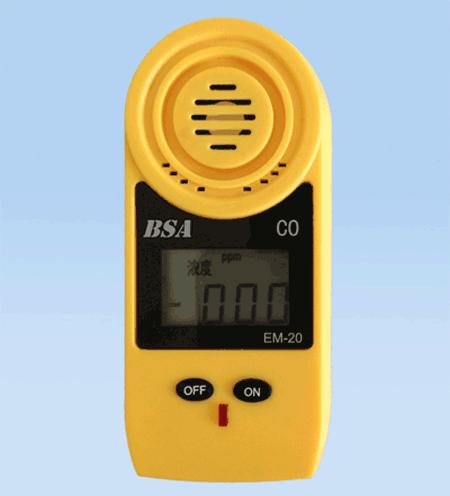Test method for carbon monoxide in air (2)
4, sample
Use polyethylene film to collect air bag, extract field air to wash 3 ~ 4 times, extract gas 0.5L or 1.0L, seal air inlet, and bring back to the laboratory for analysis. It is also possible to bring the instrument to the field for intermittent injection or to continuously measure carbon monoxide concentrations in the air.
5. Analysis steps
5.1 Start and calibration of the instrument
5.1.1 Starting zero-point calibration: After the instrument is powered on and stabilized for 30min ~ 1h, high-purity nitrogen or air is used to enter the inlet of the instrument through the Hogarat oxidation tube and drying tube for zero-point calibration.
5.1.2 End point calibration: standard carbon monoxide gas (such as 30ppm) is used to enter the inlet of the instrument for end point calibration.
5.1.3 The zero point and end point calibration shall be repeated for 2-3 times to keep the instrument in normal working condition.
5.2 Sample determination: the polyethylene thin air bag of the air sample is connected with the filter equipped with color-changing silica gel or anhydrous calcium chloride and the air inlet of the instrument. The sample is automatically pumped into the air chamber. The meter head indicates the concentration of carbon monoxide (PPM). If the instrument is brought to the site for use, it can directly measure the concentration of carbon monoxide in the air at the site. The instrument is connected with a recording instrument to monitor the carbon monoxide concentration in the air for a long time.
Carbon monoxide concentration detector
6. Calculation of results
The volume concentration of carbon monoxide (PPM) can be converted to the mass concentration mg/m3 in standard state according to the following formula.
Mg /m3 = PPM /B×28, where: B -- the molar volume of gas in standard state.
At 0℃ (101kPa), B=22.41
At 25℃ (101kPa), B=24.46
molecular weight of carbon monoxide:28
7. Measuring range, precision and accuracy
7.1 Measuring range of 0 ~ 30ppm; 0 ~ 100ppm two grades
7.2 Detection limit The minimum detection concentration is 0.1 PPM
7.3 The interference and exclusion of non-measured components of the ambient air, such as methane, carbon dioxide, water vapor, etc., can affect the measurement results. But the use of tandem infrared detector, can eliminate most of the above non - component to be measured interference.
7.4 The reproducibility is less than 1%, and the drift for 4h is less than 4%.
7.5 Accuracy depends on standard gas uncertainty (less than 2%) and instrument stability error (less than 4%)
Test method for carbon monoxide in air (1)
Test method for carbon monoxide in air (3)





 Facebook
Facebook YouTube
YouTube LinkedIn
LinkedIn Twitter
Twitter